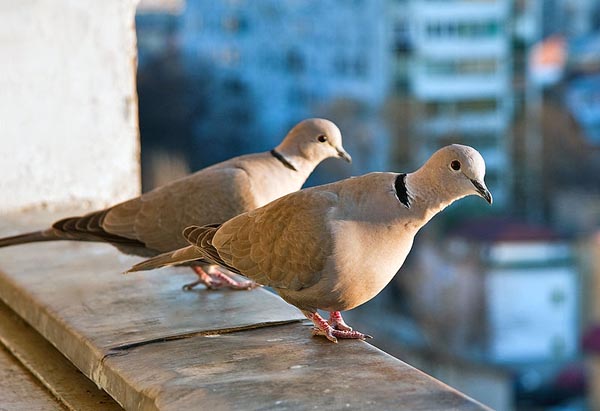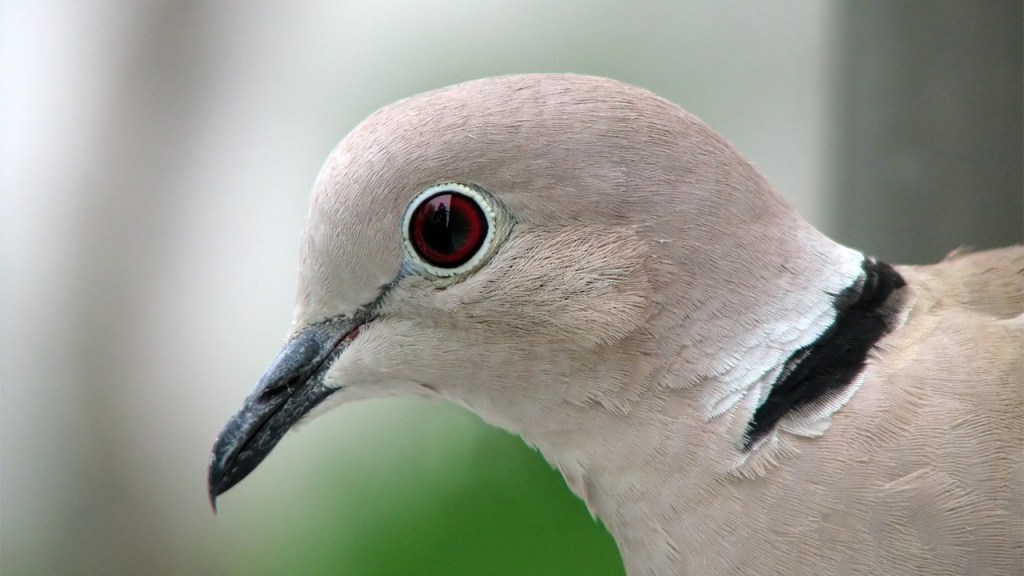The Great Backyard Bird Count (GBBC) — one of the largest citizen science initiatives in the world – annually documents a wide variety of bird population trends.
To my mind, one of the most interesting has been the dramatic spread of the non-native Eurasian collared dove across North America.
The GBBC asks citizen birders to watch an area for at least twenty minutes sometime during a four-day period in mid-February (this year’s count concluded yesterday), and record the birds they see.
Just ten years ago, seeing a Eurasian collared dove would have been a novelty. No more: the doves are now commonly reported by birders in most of the United States.
GBBC data tell the story of this rapid spread.
In the 1970s, the Eurasian collared dove was introduced to the Bahamas. By the early 1980s, the non-native birds made their way to South Florida, where they established populations. Then they began spreading north and west.
Their range appears to have expanded slowly at first. A look at GBBC reports from 1998 show a lot of sightings in Florida, with some birds reported in Texas, Alabama and Arkansas.
By 2001, the doves reached California.
Last year’s bird count results showed the Eurasian collared dove had colonized much of the country. It has not (yet) been reported in New England, but it has reached as far north as Alaska.
The GBBC’s video map dramatically illustrates this expansion.
In my state of Idaho, the doves were first recorded in 2005 by two backyard birders. In subsequent years, the bird was commonly reported in Idaho’s eastern corners. Last year, 132 GBBC participants reported 719 doves throughout the state.
I saw my first Eurasian collared dove in our backyard in 2008 – a banded bird that may have been an escaped pet. Last year, I began seeing the doves hanging around our neighborhood. This year was the first that I noted the species during my own participation in the Great Backyard Bird Count.
What’s going on here? Should conservationists be concerned about this spread?
Unlike some dove species, Eurasian collared doves aren’t migratory. However, they do readily expand into new suitable habitat. In fact, in their native Asia, Eurasian collared doves have been rapidly expanding their range as well – colonizing new countries every year.
The dove is one of those species that adapts well to humanity. The trees, power lines and bird feeders of suburbia provide perfect habitat. The Eurasian collared dove is almost always seen near homes and farms, not unbroken forest or prairie.
Research indicates it is not adversely affecting native mourning doves or other birds. It may simply be filling a new habitat niche created by suburban habitat. But it is still early in the spread.
Could Eurasian collared doves become an invasive threat? That remains to be seen.
Citizen science projects like the GBBC and another citizen initiative, Project FeederWatch, will help scientists continue to track the spread and impacts of the species. It will be interesting to learn what this year’s count found about Eurasian collared doves. If past years are any indication, their populations will likely have grown and spread into new areas of the country.
Have you seen Eurasian collared doves in your area? Have you noted other trends during your backyard bird counts? Let us know what you’re seeing!





I have a pair of Eurasia collared doves nesting under my patio cover. I also have mourning doves in my backyard and I have seen the two species sitting together on the fence. I hope the Eurasians stick around and have more broods because they seem very friendly. I’ve read they can be hand tamed.
Have seen this in the Texas Panhandle this Spring 2022. I have referred to this a the “NIKE DOVE”.
Seen in Fountain Hills AZ 3/27/2022. Beautiful bird.
I saw a collared dove last week in the borough of Queens, NYC. March 2022!
Central coast of California. We have had a lot of these doves over the last 5 years.
Eating sunflower seeds that fall from our bird feeder.
Doves seem to be in pairs most of the time, some times 7 pair are in the yard.
They are nice clean looking birds.
Now they have taken to eating the expensive cracked sunflower seeds that we set out for the Lesser Goldfinches of which we have many.
This year we have had a lot of Lawrence Goldfinches with the Lesser Goldfinches ?
The doves spook easily.
From time to time I find dove feathers in the lawn which I suppose from a hawk kill.
We used to see yellow eyed Brewer’s Blackbird in the yard but none in the last 10 years or so.
Lots of them at Costco outdoor dining though.
There are two of this collard doves in my neighbourhood that makes the cuckoo’s sound. How do I catch them for pet purpose?
The collared dove have virtually disappeared from North Florida by my observation. They exploded in population a few years ago but you hardly ever see one today.
I saw a Eurasian collared dove this morning at a Winn Dixie parking lot in meridian mississippi
Two or three Eurasian collared doves regularly visit my bird feeders in San Diego, CA. They seem to have integrated with the local mourning doves.
These birds are almost gone in Wyoming, only a couple of sightings the past two years after hundreds around a few years ago. I think the hawks have learned what an easy meal they are. My brother in Utah reports the same huge decline in numbers. His resident hawks get any that come by, leaving a pile of grey feathers. Seems they are no longer a threat of any kind. In deference to the liberals, Wyoming Game & Fish declared them to be Game Birds rather than destructive nuisances. They established hunt areas, seasons and bag limits like any other game except that the hunt area is all of Wyoming, the season is open all year and there is no bag limit. Hunters noted and responded!
Yes! I saw them today here in Half Moon Bay, California in Miramar area where I live. It was so exciting. 2 of them sitting on my fence! It was magical. My pomeranian dog just sat there staring at them..it was so cute.
We have a Eurasian dove that visits us daily on Kells in Whitehaven. Got to say it loves mealworms
They are nesting in our tree in Medicine Hat, Alberta, Canada
We have a pair of collared doves in our back yard in Tempe AZ. they come every year. We also see Aberts Towhees. Gila woodpeckers, Mourning doves, Inca Doves, White wing doves, Great tailed Grackles, Mockingbirds, Pigeons, Hummingbirds, Sparrows, House finches, Verdens,
Saw one in southeast quadrant of San Francisco, CA two weeks ago (April 2021.) Definitely this one (or ring collared) not our local Mourning Doves. Unable to see if banded.